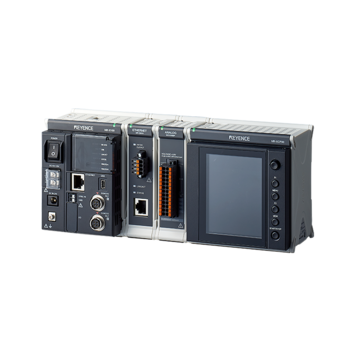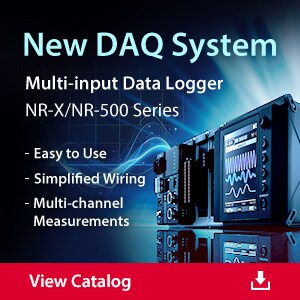Data Acquisition (DAQ)
NVH Testing - Noise, Vibration, and Harshness
-
Tags:
- Sound Level , Automotive
Testing for sound and vibration levels in vehicles helps design reliable automotive products. It can also elevate brand perception and support regulation compliance efforts.
Learn about the what and why of NVH testing and see how KEYENCE DAQ can improve the precision of NVH testing.
What is NVH?
NVH (noise, vibration, and harshness) testing helps reduce unwanted noise and vibration in vehicles. NVH is also used to test the performance of some industrial machinery.
The noise and vibration part of NVH are quantifiable measurements, while the harshness is a subjective quality associated with noise and vibration. This means a sound or vibration intensity level that is harsh to one individual may not be harsh to another.
NVH testing for noise and vibration can be measured and monitored using a data acquisition system, while harshness can be measured via jury evaluations or psychoacoustic modeling tools.
We’re here to provide you with more details.
Reach out today!

Why is NVH Testing Crucial?
Testing for NVH serves as a key performance indicator, helping product design engineers reduce noise and vibration levels to the bare minimum. It also exposes areas with performance issues and improvement opportunities. Keeping all forms of sounds and vibration at an acceptable level shows a product designer’s dedication to comfort, quality, and regulatory standards.
The last thing drivers and passengers want to experience in their vehicles is unwanted vibrations or sounds. Both can be distracting and irritating. Vibration and sound sources in automotive products are the car body, engine, or interior.
Other applications in which NVH analysis finds use are the aerospace industry, consumer electronics, industrial equipment, and medical devices.
Common NVH Analysis Issues Faced in Various Industries
Here are two common issues relating to noise, vibrations, and harshness testing.
Unrealistic Simulations
Part of NVH automotive testing procedures is engineers designing mathematical digital models of how sound and vibration would behave in an actual car. The issue is that creating accurate modeling can be complex and time-consuming. Additionally, engineers often jump on overly complicated simulations that usually don't accurately reflect the sounds and vibrations a car would produce in the real world.
Harshness
While there are so many DAQ solutions out there to measure physical parameters like vibration and frequency, correlating these quantifiable measurements to human perfection is complex. Sounds or vibrations considered harsh for one person could be tolerable to another.
Why Choose KEYENCE DAQ for NVH Applications?
While simulation tools help predict possible ways a vehicle or its component will behave under specific conditions, it's important to use data acquisition systems to capture actual, real-world performance data.
KEYENCE is proud to offer multi-input data logger solutions to complement NVH simulation model tools. Use our data logger solution to provide the ground truth for simulation results.
Capturing measurement physical properties from a physical prototype or finished product in testing situations provides reliable real-world system behavior. This can also help uncover areas to improve the accuracy of future simulations.
Want to learn how KEYENCE multi-input DAQ can help with precise measurement and analysis of noise, vibration, and harshness in automotive applications? Contact us today.
Contact us to learn more about how our advanced technology can help take your business to the next level.
Contact Us



